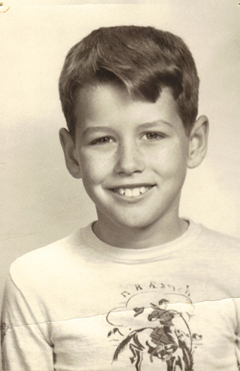I enjoyed Son of the Morning Star so much that I read it twice. Others enjoying the book a lot should check out Black Sea by Neal Ascherson and And No Birds Sing by Mark Jaffe. The three books are similar, although it isn't easy to say in what way. The best I can do is to call them non-academic histories that are so well written, and have such compelling central themes, that you just can't put them down. They're also similarly filled with digressive narratives and descriptions of subjects peripherally related to their main themes, meanderings dear to the heart of fact-freaks like myself.
A good short example from Connell's book begins with: "Then along came Blanche Boies, disciple of Carrie Nation." And Connell relates how in 1904 Blanche took a woodcutter's ax to a copy of Otto Becker's 1895 lithograph of Custer's Last Stand, which at the time was hanging in the Kansas State Historical Society in Fort Riley (the Seventh Cavalry's home fort). The reason Blanche axed the picture was that it had on it an advertisement for Anheuser-Busch beer, Mr. Busch having come into possession of the picture before the Historical Society did. In less than a page, Connell describes the law's attempts to dissuade Blanche from doing her duty to the lithograph and how she persisted and succeeded in the end. A very funny little vignette, told in the words of a master.
I do have one problem with Son of the Morning Star. Evan Connell has a lot to say -- and a lot with little good -- about soldiers, the U.S. Government, Indian Agents, indians themselves, settlers and gold rushers, and the American public. And as a dedicated misanthropist, I thought I'd recognized a fellow soul in the author. Until I read Connell's characterization of the "constellation of traits in Custer. . (like). . .a demigod. . .Siegfried, Roland, Galahad."
Now, I can go with Siegfried and Roland, but Galahad? Of the very few references to women other than Elizabeth Custer in the book's Index, there's Clara Blinn, a kidnapped white who with her infant son was in Cheyenne Chief Black Kettle's village by the Washita River when the Seventh massacred it in 1868. Subsequently, the Blinns' bodies were found near the village, the mother shot twice through the head, the infant's body so "little marked" that Connell surmises he was slung against a tree. Mrs. Blinn had got out a note to the U.S. Army pleading to be rescued but as Connell writes: "If Custer knew about this frantic plea, it made no difference. . . .His concern was . . . the destruction of an enemy stronghold." Custer loved children and animals, fine music, books, and battle, but from the evidence in Son of the Morning Star, he paid little attention to women, including his dear wife Elizabeth. And that's not my idea of a Galahad.
Maybe I'm picking nits here, maybe that's the way it was out West then, maybe the author's subject was really the battle in some sense, and not George Armstrong Custer. But my overall impression remains: Connell treated Custer considerably more favorably than the groups mentioned above. Accordingly, I think the book contains Custer-puffing. Nonetheless and howsoever, this almost-masterpiece by Evan Connell is a hell of a read, and I recommend it highly to anyone who's interested in George Armstrong Custer and how he met his Maker.
(Written in 2003, 2008)
Copyright Gentry Rowsey, 2008






